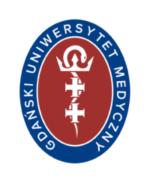The Need for a Common Baltic Sea Region Innovation Agenda for Health Economy
On the picture Thomas Karopka, BioCon Valley

With the Innovation Union as one of the seven flagship initiatives of the Europe 2020 strategy for a smart, sustainable and inclusive economy the EC has placed Innovation at the heart of its strategy for growth and jobs. Although not explicitly mentioned among the five ambitious goals that focus on employment, innovation, education, poverty reduction and climate/energy, health is certainly a top priority also for the next funding period 2014-2020.
Motivated by the Health in All Policies (HiAP) initiative started during the Finnish European Union (EU) presidency in 2006, health should be built in every relevant policy. This is also reflected in the new European policy framework Health 2020 which supports action across government and society for health and well-being. In this document it is stated that …“Health performance and economic performance are interlinked…The health sector is important for both its direct and indirect effects on the economy: it matters not only because of how it affects people’s health and their productivity but because it is now one of the largest economic sectors in every medium- and high-income country”. This emphasises the need to count health among the top priorities in a strategy for growth and jobs.
With the European Strategy for the Baltic Sea Region (EUSBSR) it is the first time that a comprehensive strategy, covering several community policies, is targeted on a ‘macro-region’. Health is also among the top priorities in this region which is reflected by the adoption of the flagship project ScanBalt Health Region. Based on previous work in the EU project Bridge BSR as well as in the current project BSHR HealthPort, co-financed by the Baltic Sea Region Programme 2007 – 2013, several barriers for innovation in life sciences and health have been identified and solutions to overcome these problems proposed. A model for a common innovation system is one of the main instruments: In particular a common innovation ecosystem has been proposed. The view of an ecosystem underlines the need for close collaboration and addressing all parts of the innovation system in a holistic way: If one part is neglected, the whole system is in danger of failing.
The field of health economy which includes health and life sciences, biotechnology, and medtech but also health services and health tourism is very diverse. It is evident that there can be no common roadmap for these diverse fields in the context of a macro-region. A common Innovation Agenda therefore does not describe a common work plan for these fields but an innovation ecosystem for the field of health economy. In this “ecosystem”- metaphor the innovation system can be thought of a “greenhouse for health innovations” where the needed services as well as the right environmental conditions are available. An example of the services could be “Early evaluation of ideas by experts from the field” in order to decrease the risk of failing in later stages, “Education and Qualification in regulations and entrepreneurial skills”, support in clinical trials, networking & matchmaking etc. The right environmental conditions are more complicated to create since these include a culture of creativity and innovativeness as well as honour for risk taking and mechanisms of financing.
On a regional level there are already local ecosystems at work. One example is the Ideas Clinic of the Aalborg Hospital. The mission of the Ideas Clinic is to commercialise ideas from the hospital’s health professionals to improve daily life of hospital patients and staff. The Ideas Clinic covers all stages from ideation till market entry and can be seen as a local ecosystem for health care innovations. Although the focus here is user or employee driven innovations from the clinical context, this example can serve as a role model for other initiatives or even stimulate the creation of a BSR-wide ecosystem for health economy.
(This article is part of the BSHR HealthPort project co-financed by the EU Baltic Sea Region Programme 2007-2013).

ScanBalt News
17 March 2025
LifeScience4EU Conference 2025 | 15-16 May | Krakow











